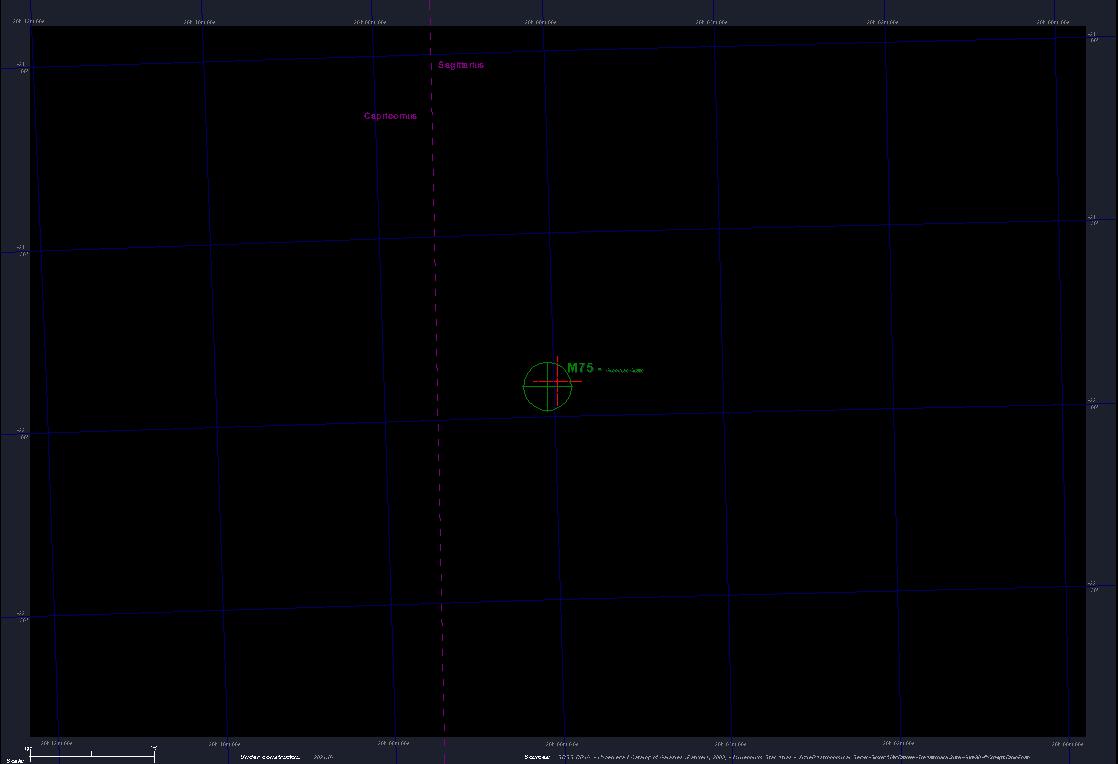 |
||
| Al di la della Luna; Beyond the Moon; Astrophotography; Astrofotografia; Danilo Pivato | ||
 |
|||
Move the mouse in and out of the image |
|||
Photo: Danilo Pivato © Copyright: - Images & texts 2021 - All rights reserved |
|||
The Analysis of Frame |
|||
M 75; NGC 6864; Gcl 116; C 2003-120; BD-22 5331; GCRV 12454; --- Globular Cluster in Sagittarius - [field: 0,45° x 0,67°] --- Mag. Limite: --.-^ - -.-^ - Fonte: SDSS - Object Coordinates RAJ2000.0: 20h 06m 04.841s - Dec J2000.0: -21° 55' 20.14" [SIMBAD] - Magnitudine: 08.61^ (r); 08.26^ (v); --.--^ (b); --- Surface Brightness: --.-^ - Object Size: 6.8' x 6.8' - - Position Angle: --° - Object alassification: I ; Redshift: z(~): -0.000631
|
|||
| Ammasso globulare non tanto esteso apparentemente (diametro 6,8' x 6,8') - si suppone sia gigantesco - individuabile in una zona della costellazione del Sagittario povera di stelle luminos -, 8° circa SO di b Capricorni, presso il confine orientale della costellazione del Sagittarius. E' tra gli ammassi globulari più compatti e concentrati che si conoscono ed anche tra i più distanti fra quelli catalogati da C. Messier. Fu scoperto da Pierre Méchain il 27 agosto 1780 e incluso nel catalogo di nebulose e ammassi stellari di Charles Messier lo stesso anno; quest'ultimo la descrisse come una "nebulosa senza stelle tra Sagittarius e la testa del Capricorno". Il primo a risolverlo in stelle fu William Herschel, assieme a numerosi altri ammassi globulari Distante 67500 anni luce attualmente (2021) si conoscono 38 stelle variabili RR Lyrae, 62 candidate Blue Stragglers. Dalle ultime ricerche M75 sembra aver fatto parte di Gaia Sausage, i resti ipotizzati di una galassia nana che si eè fusa con la nostra Via Lattea (C., Myeong, G.; et al. (August 2018), "The Sausage Globular Clusters", The Astrophysical Journal Letters, 863) | |||
| History of Observation and description of the M75: | |||
Discovered by Pierre Méchain on August 27, 1780. Charles Messier: October 18, 1780. 75. 19h 53m 10s (298d 17' 24") -22d 32' 23" Frederick William Herschel: [PT 1814, p. 279; SP2 p. 538] [PT 1818, p. 448-449; SP2 p. 600] John Frederick William Herschel: h 2064 = M75. Sweep 298 (September 22, 1830) Sweep 275 (July 28, 1830) William Henry Smyth: DCCXXX [730]. M75. DCCXXX. 75 M. Sagittarii. John Herschel, General Catalogue: GC 4543 = h 2064 = M75. John Louis Emil Dreyer: NGC 6864 = GC 4543 = h 2064; Méchain, M 75. Heber Doust Curtis: [Descriptions of 762 Nebulae and Clusters photographed with the Crossley Reflector. Publ. Lick Obs., No. 13, Part I, p. 9-42] |
|||
| Note: | |||
